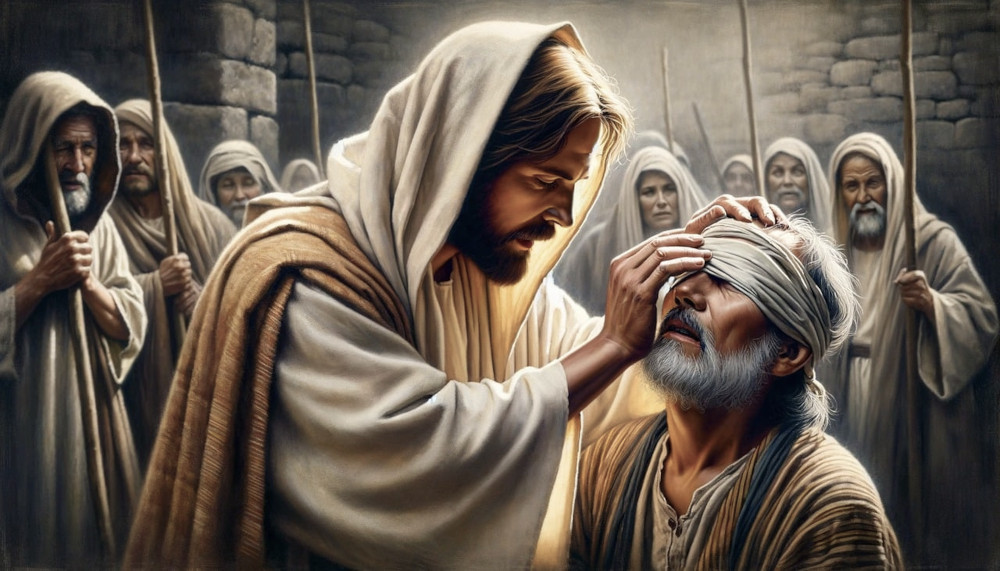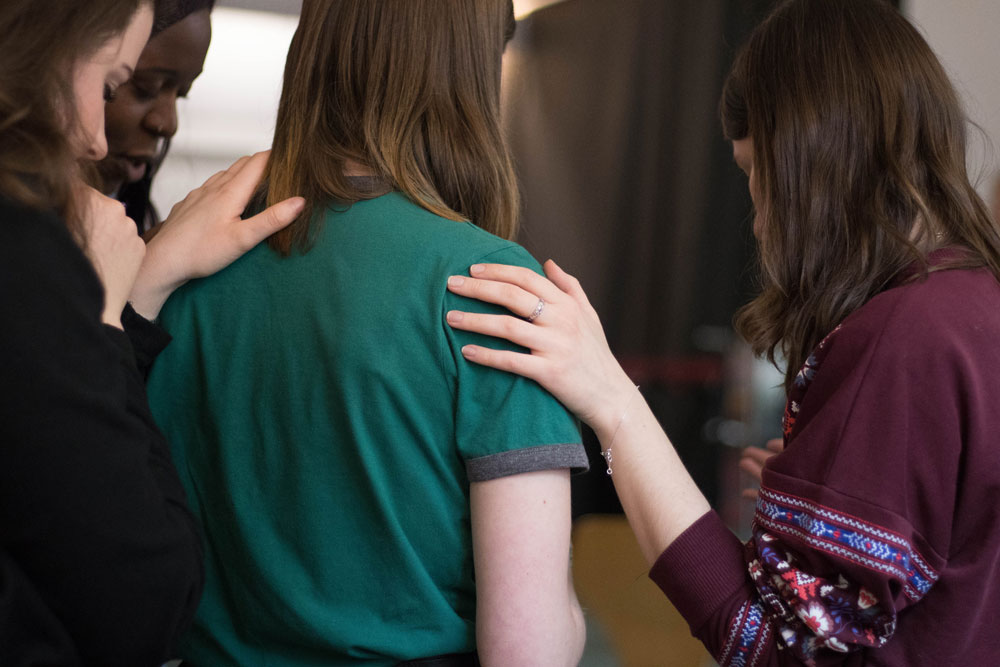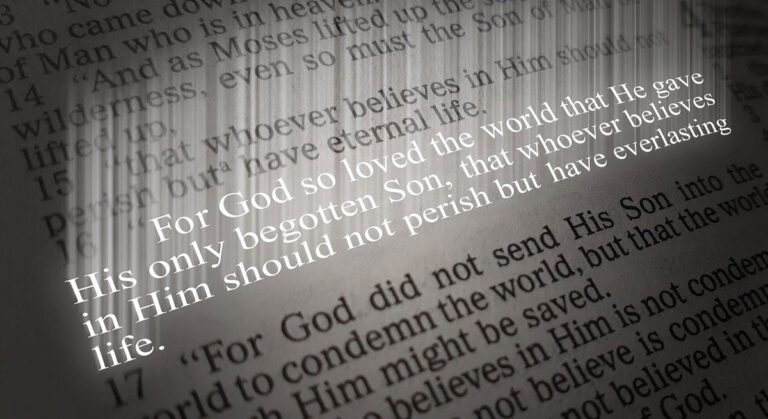In a dimly lit hospital room, the faint beeps of medical equipment echoed in the background.
John, a once lively and vibrant man, now lay motionless on the bed, his eyes closed, his face etched with the strain of his battle against a relentless illness.
His wife, Isabella, sat by his side, her hands clasped tightly around his, tears streaming down her cheeks as she whispered fervent prayers for healing.
Suddenly, the door opened, and their pastor, a gentle man named Michael, entered the room. With a warm smile, he approached the bedside and placed a hand on John’s forehead.
“My friends,” he said softly, “the Lord has heard your prayers, and He desires to heal John through the laying on of hands.”
Isabella’s eyes widened with a glimmer of hope as Michael continued, “In the Gospels, we see Jesus laying His hands on the sick, and they were healed. As believers, we are called to follow His example and lay hands on the sick, trusting in the power of God’s anointing to flow through us.”
With reverence, Michael laid his hands upon John’s body, and a tangible presence filled the room, a warmth that seemed to emanate from within.
A few moments later, John’s eyes fluttered open, a newfound strength coursing through his veins, as the spirit of infirmity that had held him captive was broken.
In the pages of the Bible, we witness the incredible power of laying on of hands, a practice rooted in the very foundations of Christianity.
From the Old Testament accounts of patriarchs blessing their children through the laying on of hands to the New Testament examples of Jesus and the apostles ministering healing and imparting the Holy Spirit through this sacred act, we see the profound impact it has had on the lives of countless believers throughout history.
Jesus’ Example of Laying on of Hands

In the Gospels, we find numerous instances where Jesus laid His hands on people, and miraculous healings followed. In Mark 1:41 (ESV), we read:
“Moved with pity, he stretched out his hand and touched him and said to him, ‘I will; be clean.’”
biblegateway.com
Jesus’ touch was not merely a physical gesture; it was a conduit for the power of God to flow, bringing healing and restoration to those in need.
Another powerful example is found in Mark 5:23 (ESV), where a desperate father pleads with Jesus,
“My little daughter is at the point of death. Come and lay your hands on her, so that she may be made well and live.”
biblegateway.com
Jesus responded to this man’s faith by going to his home and laying His hands on the child, raising her from the brink of death.
The accounts of Jesus laying hands on the sick and afflicted are numerous, and each one reminds us of the compassion and power of our Savior.
Whether it was the blind man in Bethsaida (Mark 8:22-25), the deaf and mute man (Mark 7:32-35), or countless others, Jesus’ touch brought healing and wholeness, demonstrating the Father’s heart to see His children made well.
The Anointing and Power of God

But the laying on of hands is not merely a physical act; it is a spiritual conduit through which the anointing and power of God flow.
In the Old Testament, we read about the prophet Habakkuk’s vision of God, describing “rays flashing from his hand” (Habakkuk 3:4, ESV). This imagery is echoed in Malachi 4:2, where the “sun of righteousness” is said to rise “with healing in its wings” (ESV).
These passages reveal that God’s healing power is manifested through His hands, and as believers made in His image, we too can be vessels through which this divine anointing flows.
When we lay hands on the sick in faith, we are releasing the very power of God to bring healing, deliverance, and restoration.
Practical Insights

To minister effectively through the laying on of hands, we must cultivate a bold and unwavering faith.
In the Gospels, we see people who were not timid or uncertain; they boldly approached Jesus, beseeching Him to touch them or lay His hands upon their loved ones (Mark 5:23, Mark 7:32).
Moreover, Jesus sometimes removed people from environments of unbelief, recognizing that negativity and doubt can hinder the flow of God’s power.
In Mark 8:22-25, we read how Jesus led a blind man out of the village before ministering to him, underscoring the importance of creating an atmosphere of faith.
Additionally, the account of the blind man teaches us the value of persistence in the laying on of hands.
When the man’s sight was not fully restored after the initial laying on of hands, Jesus did not give up; He laid His hands on him again, and the man’s vision was completely healed.
Testimonies and Examples

Throughout church history, countless testimonies have been shared of people experiencing healing, deliverance, and empowerment through the laying on of hands.
From the early church’s practice of laying hands on believers to receive the Holy Spirit (Acts 8:17, Acts 19:6) to modern-day accounts of miraculous healings, this sacred act continues to impact lives in powerful ways.
One such testimony comes from a missionary named Lucy, who was ministering in a remote village in Africa.
During her time there, she encountered a young girl named Amina, who had been paralyzed from the waist down since birth. With faith and compassion, Lucy and her team laid hands on Amina, praying fervently for her healing.
To their amazement, Amina’s legs began to move, and she slowly rose to her feet, taking her first steps in her life.
The joy and awe that filled the village that day were palpable, a powerful reminder of the transformative power of God’s anointing released through the laying on of hands.
Key Takeaways
- The laying on of hands is a Biblical practice rooted in the teachings of Christ and the early church.
- Jesus frequently laid hands on the sick, demonstrating the Father’s heart for healing and restoration.
- The laying on of hands is a conduit for the anointing and power of God to flow, bringing healing and deliverance.
- Bold faith, an atmosphere of belief, and persistence are essential for effective ministry through the laying on of hands.
- Countless testimonies throughout church history attest to the transformative power of this sacred act.
Conclusion
The laying on of hands is a sacred practice deeply rooted in the teachings of Christ and the early church. It is a conduit through which the healing power of God flows, bringing restoration, deliverance, and empowerment to those in need.
As believers, we are called to follow in the footsteps of Jesus and the apostles, boldly laying hands on the sick, and trusting in the anointing of the Holy Spirit to work miracles.
Whether in our homes, churches, or communities, let us embrace this powerful ministry, laying hands on those who need healing, imparting the gifts of the Spirit, and witnessing the transformative power of God’s love in action.
Frequently Asked Questions
Q. Is the laying on of hands a Biblical practice?
A. Yes, the laying on of hands is a practice deeply rooted in the Bible. In the New Testament, we see Jesus and the apostles frequently laying hands on people for healing, imparting the Holy Spirit, and commissioning for ministry (Mark 16:18, Acts 8:17, 1 Timothy 4:14).
Q. Is the laying on of hands only for healing?
A. No, the laying on of hands has various purposes in the Bible. It was used for healing (Mark 16:18), imparting the Holy Spirit (Acts 8:17), commissioning for ministry (Acts 13:3), and blessing (Genesis 48:14).
Q. Can anyone lay hands on someone for healing or imparting the Holy Spirit?
A. While the Bible encourages believers to lay hands on the sick (Mark 16:18), it is essential to approach this practice with faith, reverence, and a pure heart. In the early church, elders and leaders often laid hands on believers for specific purposes (Acts 8:17, 1 Timothy 4:14).
Q. Is the laying on of hands a one-time event, or should it be repeated?
A. The Bible provides examples of both one-time and repeated instances of laying on of hands. In Mark 8:22-25, Jesus laid hands on a blind man twice for complete healing. The practice can be repeated as needed, with faith and persistence.
Q. Is the laying on of hands a sacrament in some Christian traditions?
A. Yes, in some Christian traditions, such as Catholicism and Anglicanism, the laying on of hands is considered a sacrament, particularly in the context of Holy Orders (ordination of priests and bishops) and Confirmation.
In these traditions, the laying on of hands is seen as a means of conferring the Holy Spirit and setting individuals apart for specific roles and responsibilities within the Church.







i have been tormented for a year after a demonic doorway was opened. I know this was my fault as I walked away from the lord 50 years ago. I have gone to the depths of my soul with repentance and forgiveness to no avail. Childhood abuse and teenager sexual abuse was also part of this. These demons have affected my mind, body, and soul. It has gotten way worse this past few weeks and i am fast feeling hopelessness creep in to my existence. I read the bible much, pray a lot, and search deeper for other sins or forgiveness. Recently lost my job as a senior because it manifested vocally in a conversation with my boss after he bullied and centered me out after I tried to bring him To Jesus. after getting my life in order I have lost almost everything I have including my peace in the spirit. I don’t question or get angry at god because he doesn’t cause evil. If any body knows anybody in the Vancouver BC Canada area who is involved in real deliverance please send me an email at [email protected]